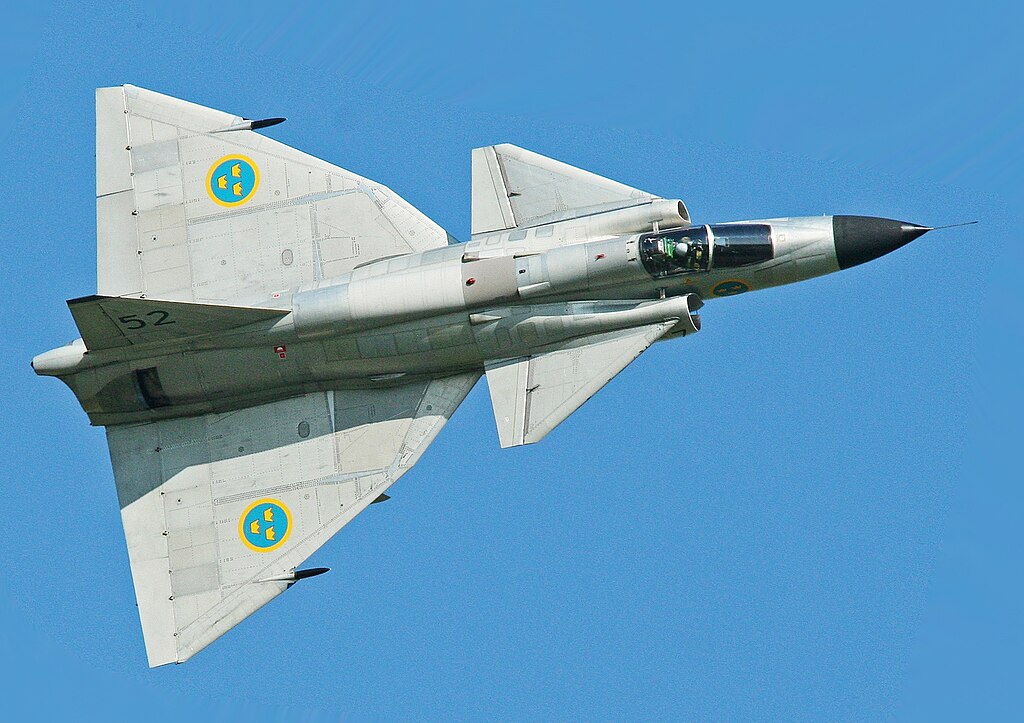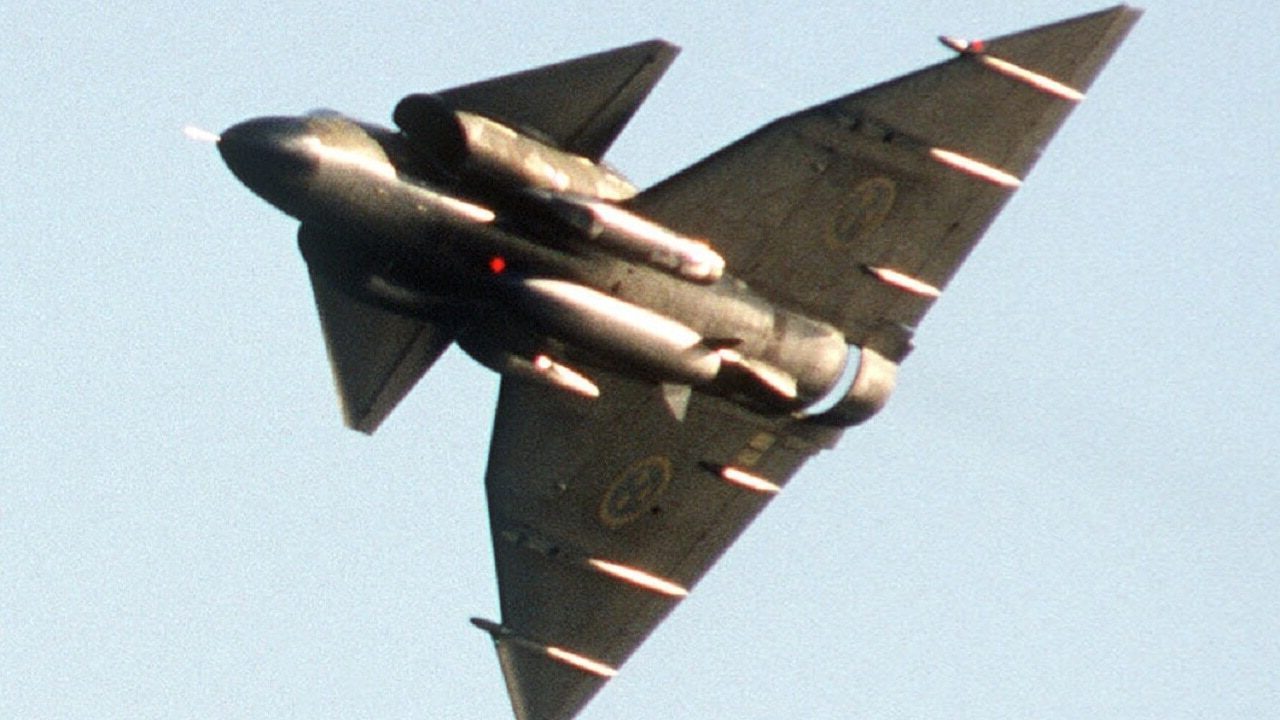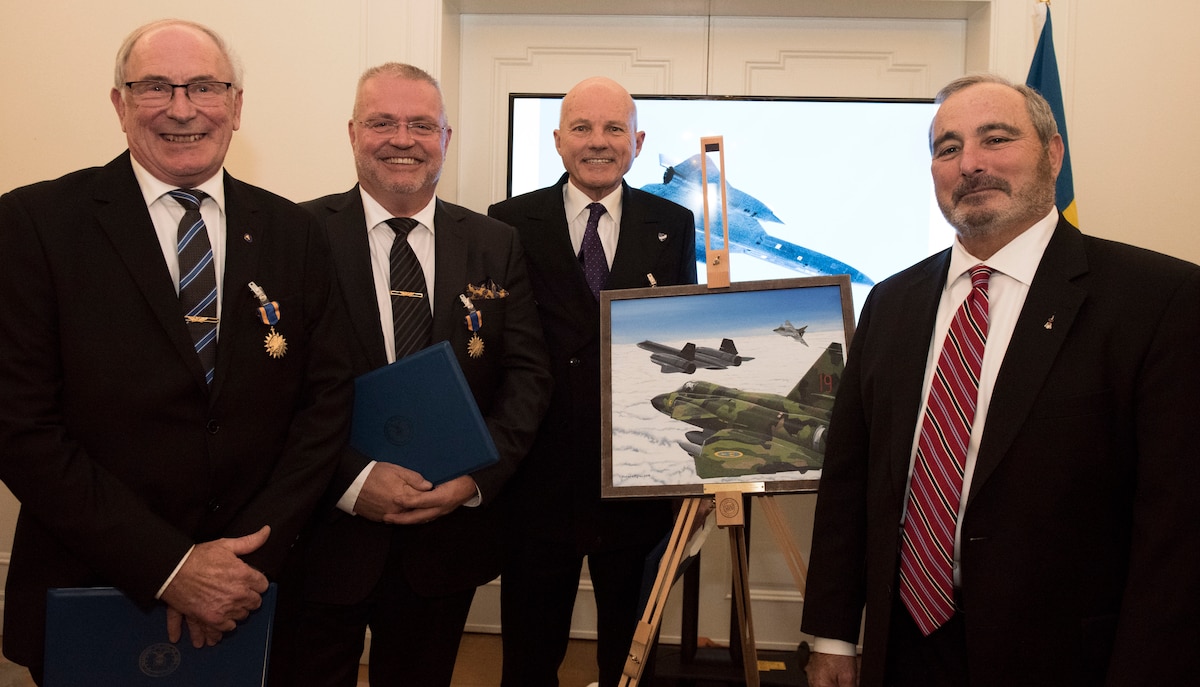The SR-71 Blackbird, an iconic warplane known as the fastest operational aircraft in history and therefore uncatchable, was used to spy on the Soviet Union for the CIA and the US Air Force (USAF) at the peak of the Cold War.
For decades, the Blackbird flew unchallenged until the Saab JA-37 Viggen of the Swedish Air Force (Swedish: Flygvapnet) arrived, becoming the only aircraft to score a missile lock and visual contact on this legendary aircraft.
Designed to be a stealthy and superfast reconnaissance plane, the Lockheed SR-71 Blackbird set several speed records during its close to 25 years in service. On July 28, 1976, the aircraft hit 2,193.167 miles per hour (3,529.56 km/h)—over Mach 2 or more than twice the speed of sound.
Flying at about 36.55 miles per minute (3,216.4 feet per second), the Blackbird was faster than a bullet fired from an M1 Garand rifle of the World War II era, which possessed a muzzle velocity of 2,800 feet per second.
The Soviets had some impressive aircraft, like the MiG-25 Foxbat, which attempted to intercept the SR-71 several times but to no avail.
In his biography, former Soviet MiG-25 pilot Viktor Belenko recalls that the SR-71s flew off the coast of Russia, “taunting and toying with MiG-25s sent up to intercept them, scooting up to altitudes the Soviet planes could not reach, and circling leisurely above them, or dashing off at speeds the Russians could not match.”
The SR-71’s ‘Baltic Express’
The SR-71’s mission during the 1980s included pre-determined high-altitude flight paths toward strategic targets. Among these was the ‘Baltic Express,’ which required the aircraft to fly through a small gap in the international airspace close to Sweden before reaching the Soviet targets.

While Stockholm maintained a strict policy of neutrality, it was expected that if an invasion were to occur, it would be from the Soviet Union. Even then, the Swedish government could not be seen allowing the US spy planes to enter its airspace.
When the SR-71 started missions in the 1960s, it was at the peak of stealth technology, and only a few radar systems could even hope to track it. However, by the 1980s, novel and more advanced ground-based systems could spot the aircraft.
When the SR-71 first began operating in Europe, the Flygvapnet was equipped with the Saab J-35F Draken (or Dragon). Though intercept attempts were made using the Draken, it was simply not up to the task.

However, with the entry of the Swedish JA-37 Jaktviggen (or fighter Viggen) into the Flygvapnet, the equation changed because of the aircraft’s top speed of over 2 Mach, excellent maneuverability, robust weapons systems, and superior avionics.
JA-37s Challenge The SR-71 With A Terrifying Strategy
As part of their Baltic Express route, the SR-71s consistently entered a specific waypoint near Copenhagen, which triggered the Swedish air defense radar and the subsequent scrambling of the JA-37s.
Considering it was a near-impossible task to intercept the Blackbird from behind, the Flygvapnet devised an ingenious and quite terrifying scheme of approaching the SR-71 head!

It required the JA-37s to perform a steep climb to reach an altitude just below the SR-71, followed by an acceleration to Mach 2 speeds, and then climb again to fly directly towards the SR-71 from the front.
Usually, an intercept from behind allows the missiles of an interceptor a better chance to lock on to the target. Still, the Viggen’s Skyflash missile could use its radar to lock on from the front, which made it well suited for Viggen’s task of achieving an effective missile lock on the Blackbird.
The most challenging phase of this plan was the steep climb, as the pilots had to be mindful of the temperature limits of the turbine exhaust gases of Viggen’s Volvo Flygmotor RM8B turbofan jet engine while scanning their radar screens.
During this phase, the pilot would tilt his radar scan angle down, and the radar then had a few seconds to locate and lock on to the target before the two aircraft passed one another with a combined speed of Mach 5.

The plan was successfully realized for the first time in January 1986, when the Swedish fighter pilot, Per-Olof Eldh, received an alert of an SR-71 approaching Swedish Airspace and scrambled in his Viggen to initiate the head-on attack protocol devised for challenging the Blackbird fighter.
When he reached the target altitude, Eldh lined up with the Blackbird’s flight path. Moments later, he scored a full missile lock on the approaching Blackbird, with the missile armed and ready to fire as the two planes flew towards each other at blinding speed.
No missiles were fired, and the two aircraft crossed paths harmlessly, staring at one another. Blackbird received a loud and clear message from the Viggen that it could no longer fly wherever it pleased without being challenged.
After that, Eldh achieved five more successful SR-71 interceptions using this strategy.
“I have five hot intercepts against the SR-71 to my credit. All can be described as successful. I was visual three times; on several occasions, the SR-71 was contrailing, which was very useful because you could do a visual check to ensure you ended up in the right spot!” Eldh was quoted as saying by The Aviation Geek Club in 2018.

During the height of the Cold War, the Swedish JA-37 pilots would be scrambled on 400-500 live Quick Reaction Alert (QRA) missions per year to intercept any unidentified aircraft approaching Swedish airspace.
The QRA targets would come from both Warsaw and NATO nations, as they would usually fly close to Swedish airspace over the Baltic Sea or the Gulf of Bothnia. The SR-17s flying on their regular Baltic Express routes would be the most challenging.
Viggens Safeguard A Blackbird From Potential Attacks By Soviet Foxbats
The SR-71s’ Baltic Flight path remained unchanged throughout their operation in Europe, and Viggens continued to challenge them. Still, a remarkable incident occurred in 1987 that saw one of the Blackbirds violating the Swedish Airspace and Viggens becoming its guardian angels.
An SR-71, piloted by Lt. Cols Duane Noll and Tom Veltri, took off from RAF Mildenhall in the UK on June 29, 1987, for its flight over the Baltic Sea, and when the Swedish radars got wind of the Blackbird’s arrival, Viggens were scrambled to intercept it.
However, the SR-71 suddenly veered off course. It flew into Swedish airspace over Gotland, descending to an altitude of 25,000 feet, nearly a third of its average mission altitude, and slowing to a relative crawl.
The Viggens caught up with the Blackbird and began flying alongside with weapons ready. Still, upon visually inspecting the plane, the Viggen pilots noticed that one of the Blackbird’s massive jet engines had exploded mid-flight, because of which it was struggling to remain airborne.

In addition to Swedish Viggens, the Soviet MiG-25s also knew the Baltic Express route. Therefore, Blackbird’s engine failure made it vulnerable to potential attacks from Soviet pilots who would have loved the chance to shoot down one of America’s precious spy planes.
Realizing this, the Viggen pilots formed a formation to protect the struggling Blackbird; they escorted it beyond Swedish airspace because the Blackbird was able to land unharmed in West Germany and was recovered by the USAF.
One of the Viggen Pilots even photographed the SR-71 flying on one engine.
The incident remained a secret until it was declassified in 2017, and a year later, those four Swedish Pilots – Col. Lars-Eric Blad, Majs. Roger Moller, Krister Sjoberg, and Lt. Bo Ignell were awarded the US Air Medal for Bravery in an official ceremony in Stockholm, Sweden, on November 28, 2018.

The Air Medal citation says they “decided to render support to the aircraft by defending it from any potential third-party aircraft that might have tried to threaten it. The pilots then accompanied the aircraft beyond the territorial boundaries and ensured that it was safely recovered.”
- Contact the author at tanmaykadam700@gmail.com
- Follow EurAsian Times on Google News




